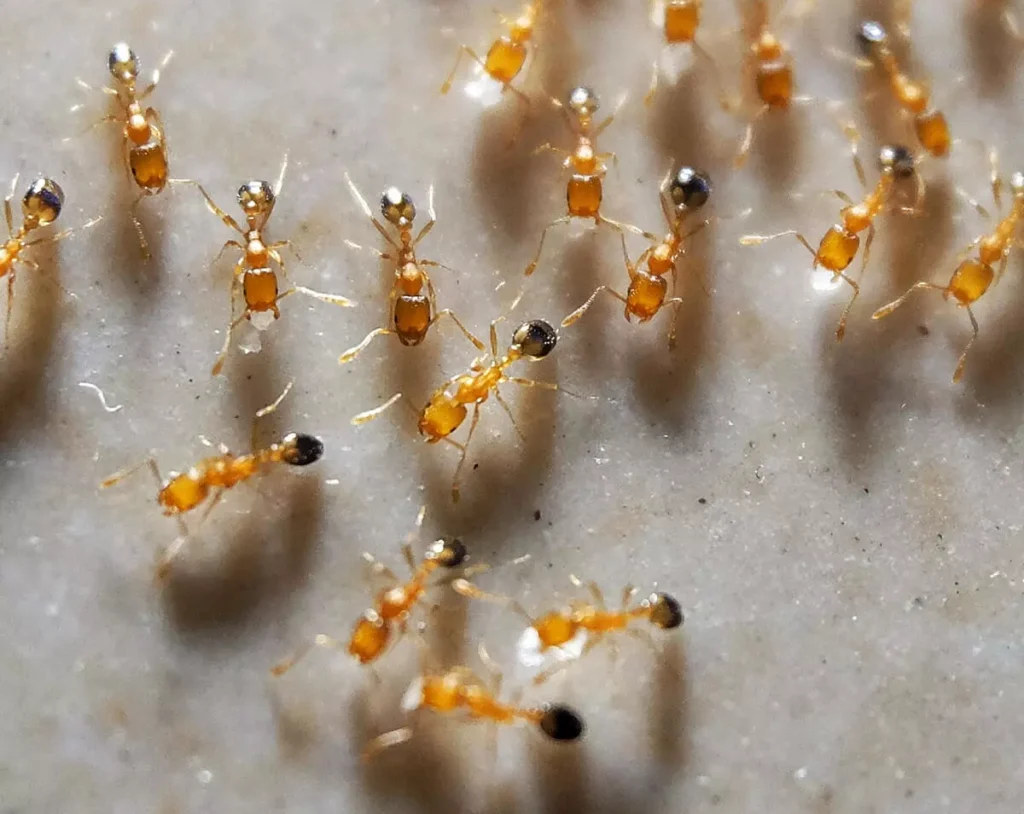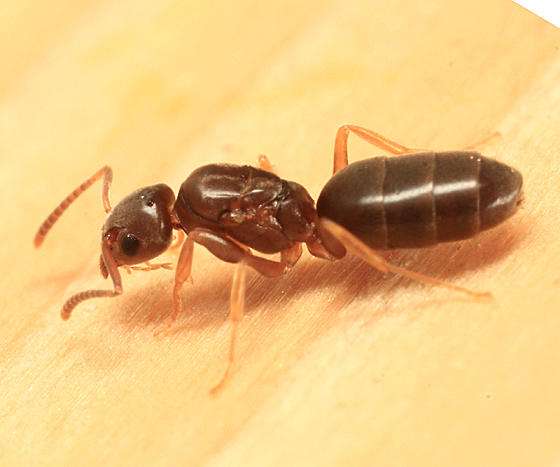
The pharaoh ant, Monomorium pharaonis, is a tiny (less than 2 mm), yellow or light brown, nearly translucent ant that is known for causing severe indoor annoyance, particularly in hospitals.
Where do they live?
Pharaoh ants prefer to be close to warm, humid locations. They may build their nests in difficult-to-reach places, including beneath baseboards in furniture, underneath floorboards, or between sheets.
Diet
The variety of foods that pharaoh ants enjoy eating includes syrups, fruits, meats, and dead insects. They can be an issue in restaurants, supermarkets, hospitals, and residential complexes.
Identification
Pharaoh laborers are very little (1/16 inch long), pale yellow to reddish brown in hue, with a somewhat darker abdomen (rear portion of body). No stinger is present. The thorax lacks spines and the petiole, the small waist between the thorax and abdomen, has two nodes. The eyes are fully formed. Three gradually longer segments form a distinct club at the end of the antennal segments. This is in contrast to the two-segmented club of the thief ant.

Queen-worker relations
The queen ant will rear the first batch of workers when she first settles into a new nest. Resources will then be put toward new males and queens after a worker threshold has been attained. Queens are not required when a new nest is built; after locating an appropriate nest site, workers can raise new queens.
When the current fertile queen in a colony of pharaoh ants is eliminated, new male and queen ants can be generated. When the queens are not present, the nest’s workers can either rear sexual larvae that are already present or transport sexual larvae from nearby bud nests or the main nest to its own nest. While there are still fertile queens in the nest, the worker ants will, however, cannibalize the sexual larvae and either reject or consume sexual larvae from neighboring nests. The worker ants, on the other hand, are always willing to accept and care for worker larvae from neighboring nests. Additionally, polygamous species like pharaoh ants, according to Schmidt et al., will allocate more resources to the female caste than the worker caste in order to assure the quick expansion of new colonial outposts.
Management
Due to their breeding habits in tough-to-reach places, Pharaoh ants are challenging to control. Both the foraging area and all nesting locations must receive thorough and comprehensive treatment. Therefore, treatment must cover the floor voids, walls, ceilings, and electrical wall outlets. The most effective way to control Pharaoh ants today is through baits, and various baits (insecticides) have labels for controlling ants indoors. In order to eradicate a Pharaoh ant infestation, a multifamily building must be treated as a whole. A perimeter barrier treatment can help manage ants that are outside nesting.
It is impossible to expect baits to work in any area. Finding pharaoh ant paths and their sources of food and water is necessary for good bait placement. It is best to use non-repellent baits (such boric acid, hydramethylon, or sulfonamide) because repellent baits can make things worse by forcing the colony to break apart and bud. Ant activity will thus temporarily decrease while the new colonies grow, then increase as the foragers start foraging again.
Table





